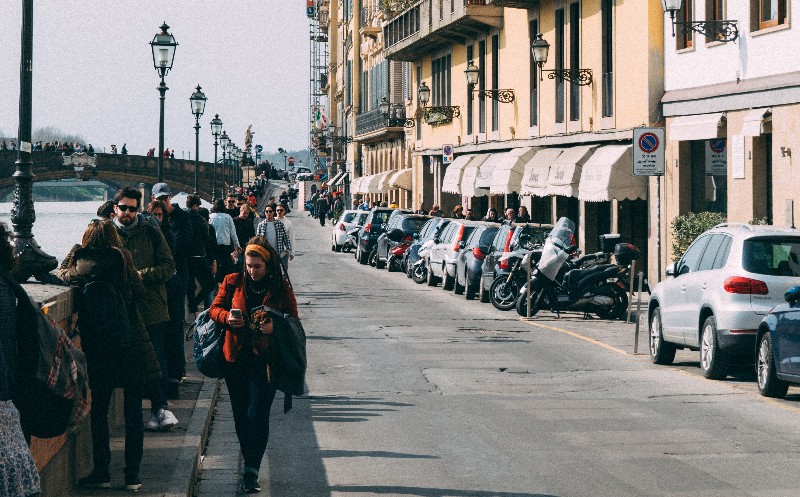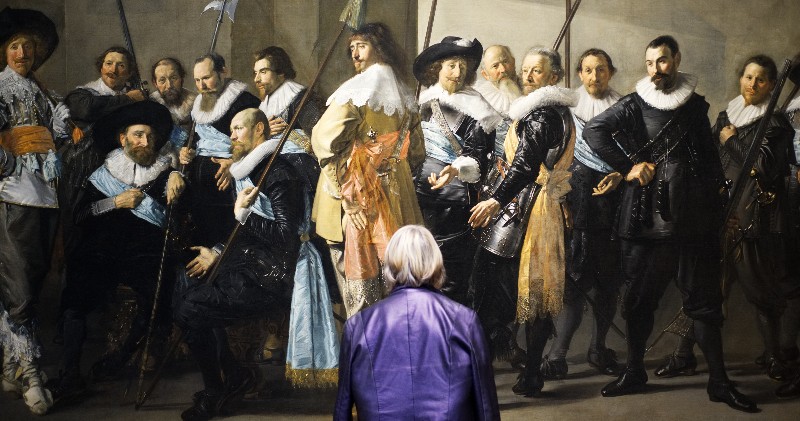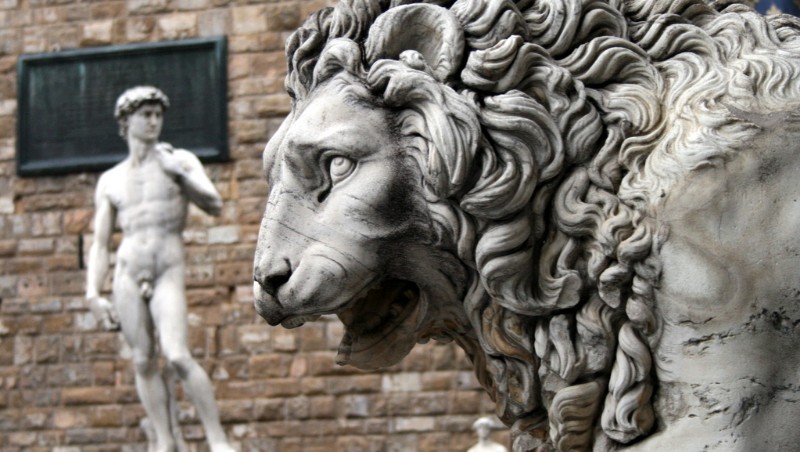Think you know everything about the City of Lilies? Think again. These 7 facts about Florence will blow your mind.
1. Florentines went to great lengths to evade the Nazis in World War II
Everyone knows of Hitler and his henchmen’s tirades to destroy Florence – retreating Nazi forces bombed every bridge in Florence except the Ponte Vecchio in the hopes of slowing the arrival of Allies – but few have heard of the story of Marcello Buiatti and his family.
Marcello was five years old when the Germans invaded Florence and he and his Jewish family were forced into hiding. For a year they, along with other Jewish families and opposers, hid in an empty house in Via Faenza. The group managed to avoid capture and persecution and were eventually liberated by Allied troops. Marcello went on to become an author, molecular geneticist, evolutionist and philosopher of biology. He still lives in Florence. Read his inspiring story in full here.
2. Florence is home to more of the world’s heritage-listed art than any other city

Photo by Kai Pilger on Unsplash
From Michaelangelo’s David to Botticelli’s Birth of Venus, Florence is home to many incredible, significant works. Even Florence itself is a piece of art – the city was declared a World Heritage Site by UNESCO in 1982.
3. We have Florentines to thank for our favourite dessert

Photo by Mark Cruz on Unsplash
While there are some conflicting reports, most historians credit the creation of gelato to Bernardo Buontalenti, an architect, sculptor, painter and designer, who worked at the grand-ducal court in Florence.
In the late 1500s, Buontalenti was asked to organise the celebrations welcoming Spanish guests of the Grand Duke. Alongside staging theatrical performances and fireworks, Buontalenti prepared a cream flavored with bergamot, lemons, and oranges, and had it chilled. This first gelato isn’t too far off from the scoops we serve up today.
4. … and modern nursing
Florence Nightingale was born in Florence on May 12, 1820, during her parents’ “grand tour” of Europe. They moved back to England a year later, but the social reformer had one constant reminder of her roots: her name.
5. Art overdose is actually a thing in Florence

Photo by Christian Fregnan on Unsplash
Stendhal Syndrome (or ‘Florence Syndrome’) is a psychosomatic disorder that causes rapid heartbeat, dizziness, sweating, disorientation, fainting, and confusion when individuals encounter works of art they consider to be outstandingly beautiful.
The condition was first noted by French author, Stendhal, who wrote of feeling utterly overwhelmed and physically weak by the Renaissance masterpieces he saw during a trip to Florence in 1817. While some visitors to other Italian cities have experienced Stendhal Syndrome, the condition occurs most often in Florence. Psychiatrist Dr. Graziella Magherini claims this phenomena is due to the sheer number of striking and recognisable Renaissance artworks housed in the city’s galleries.
Although some question the syndrome’s validity, sufferers have been hospitalised and even received antidepressants after experiencing the condition. Mostly though, the affects of Stendhal Syndrome are short-lived.
6. Lions had godlike status

Photo by echiner1 [CC BY-SA 2.0], via Wikimedia Commons
Lions have had legendary status in Florentine folklore for centuries. In the Republic of Florence, the lion was an important symbolic figure for the independent state – it was an animal that could annihilate both the wolf of Siena and the eagle of Pisa.
Up until 1771, the Republic of Florence even kept a menagerie of live lions in Via dei Leoni behind Palazzo Vecchio. Allegedly, one day a lion broke out of the cage, running off with a baby boy. Remarkably, the baby was later returned to the mother unscathed. The story fits the public narrative of lions as a protector of the city and its citizens.
Today, nods to the king of the jungle are still found in Florence’s streets, with depictions of lions appearing as statues, on gates, doorways and even lampposts. Make it your mission to spot a few on your next trip.
7. Tuscany led the charge in abolishing the death penalty
Torture and the death penalty was first abolished in Tuscany under the rule of Pietro Leopoldo on November 30, 1786. This made Tuscany the first modern European state to do away with capital punishment.
In 1926 however, the death penalty was reintroduced by Benito Mussolini. By 1947, capital punishment was again abolished, marking the end of Fascist rule in Italy.